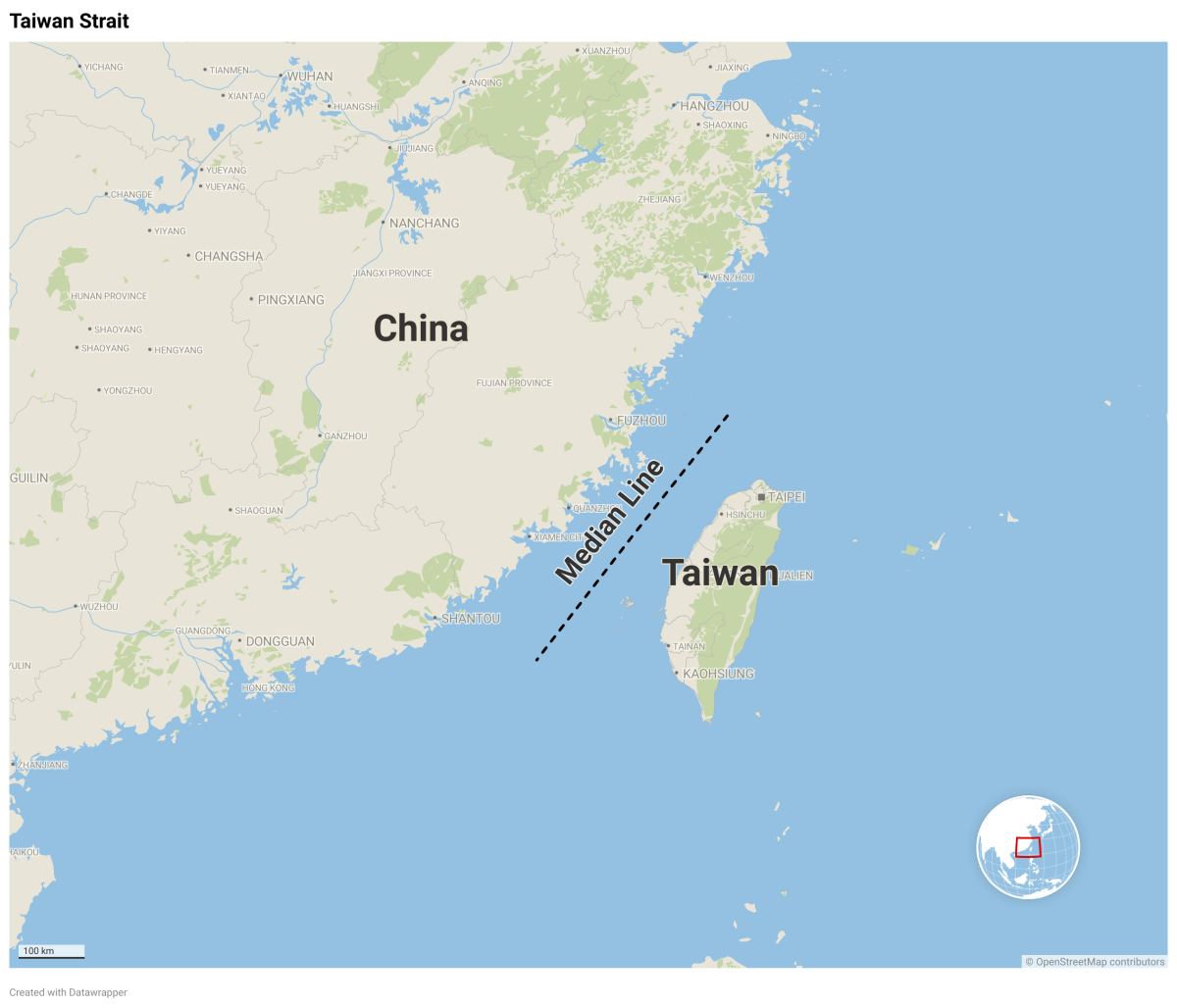A lone Taiwanese warship was involved in a two-on-one standoff with a pair of approaching Chinese navy vessels in the Taiwan Strait last month, according to radio challenges reviewed by Newsweek.
The ROCS Di Hua, a Kang Ding-class frigate of Taiwan's navy, moved to intercept the People's Liberation Army (PLA) Navy's Type 052 destroyer the Hohhot and Type 054A frigate the Yixing as they allegedly approached the island's contiguous zone, a 24-nautical mile maritime buffer bordering Taiwan's territorial waters.
The exchange, released by Robin Hsu of the local plane-spotting group Taiwan ADIZ, was part of a now near-daily occurrence in the waters around Taiwan, where Chinese forces in the sky and sea are pressuring the island's government with so-called "gray zone" coercive maneuvers.
The Communist Party in China claims Taiwan as its own, despite never having ruled the democratically governed island, and has vowed to unify it at an unspecified time in the future.
Running polls, however, indicate that most Taiwanese prefer the status quo and have little interest in a political union across the strait. Respondents regularly choose Taiwan's current status, however uneasy, over a formal declaration of independence, over which China has said it would go to war.
In the recording, the Di Hua can be heard broadcasting its challenge: "Your actions have seriously undermined peace, stability and security in the Taiwan Strait.
The Taiwanese frigate followed that up with a warning: "If you insist on entering our 24-nautical-mile contiguous zone, I will be forced to expel you."
The Hohhot responded: "Your so-called 24-nautical-mile contiguous zone does not exist. Mind your language," proceeding to declare that both sides of the strait belong to China and that its activity was "safeguarding the peace and stability" of the strait.
The Di Hua reiterated that its Chinese counterpart would be "responsible for any ensuing incident."
The Di Hua's separate radio exchange with destroyer the Yixing went much the same way.

In a press release published Thursday, Taiwan's navy wrote the country's military uses joint intelligence, surveillance, and reconnaissance to monitor the situation in waters surrounding Taiwan, broadcasting alerts to approaching Chinese ships and responding "in accordance with regulations."
The PLA Eastern Theater Command did not respond to Newsweek's request for comment by publication time.
Naval vessels sailing at the edge of the contiguous zone "is intended to warn Taiwan against pursuing independence, to demonstrate [China's] sovereignty claim over those waters, and to stress Taiwan's armed forces," Bonnie Glaser, managing director of the German Marshall Fund of the United States Indo-Pacific Program, told Newsweek.
Glaser believes there is a psychological component to such operations as well.
"Beijing also seeks to erode the confidence of the Taiwanese people in their ability to defend their way of life," she said.
She pointed out that the Chinese navy stepped up its once rare crossings over the Taiwan Strait's so-called median line after former U.S. House Speaker Nancy Pelosi visited Taiwan in August 2022, infuriating Beijing.

China sends military aircraft over the median line on a near-daily basis. Warships crossing over the invisible demarcation have also become more frequent.
Wu Tzuli, an associate research fellow with Taiwan's top defense think tank the Institute for National Defense and Security Research, told Newsweek that China's provocative use of radio communication may be used to increase psychological pressure on Taiwanese crews, in addition to boosting Chinese morale.
The contiguous zone approaches also have practical merit, enabling China to collect data on exchanges with Taiwanese forces and study how they react.
Asked whether he thought Taiwan's standard response to these episodes remains effective, Wu said: "As long as Taiwan's frontline troops perform their tasks in accordance with [defense ministry] regulations and as long as the PLA does not violate Taiwan's sovereign territory, the measures taken by Taiwan will be effective."
Earlier this week the U.S., which is Taiwan's main arms supplier and security partner despite not officially recognizing it, sent a Navy surveillance plane through the strait in a freedom of navigation flight.
Taiwan's official name is the Republic of China, a government that relocated to Taiwan in 1949 after being defeated by communist forces in the Chinese Civil War. The People's Republic of China (PRC) is the official name for the government ruling in Beijing.
Washington maintains a decades-long policy of acknowledging, but not necessarily supporting, the PRC's claim that there is only one China and that Taiwan is part of it.
Uncommon Knowledge
Newsweek is committed to challenging conventional wisdom and finding connections in the search for common ground.
Newsweek is committed to challenging conventional wisdom and finding connections in the search for common ground.
About the writer
Micah McCartney is a reporter for Newsweek based in Taipei, Taiwan. He covers U.S.-China relations, East Asian and Southeast Asian ... Read more





